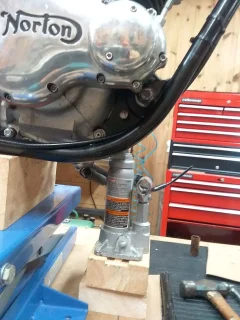BERT
VIP MEMBER
- Joined
- Nov 23, 2020
- Messages
- 667
Can the unit be removed without moving the engine on this model? The manual states it can be removed after removing the 3 rear engine mount bolts and forcing the cradle assembly to the rear ."Only in isolated cases will it be necessary to take out the front mounting main bolt to provide still further working space." Is the combat one of these certain models? It would be nice for a heads up on what other components would need to be removed. Any advice would be appreciated. Thanks in advance.
Last edited:

